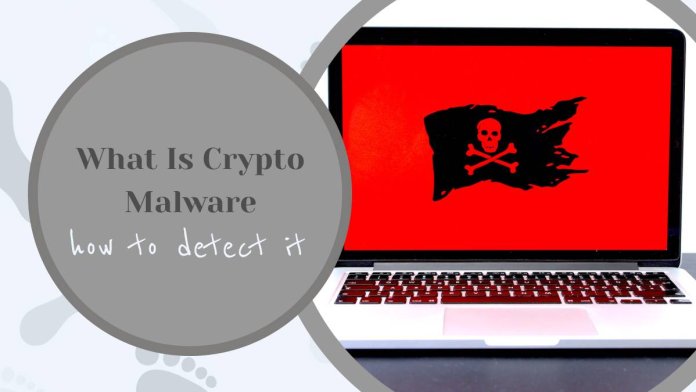The surge of cryptocurrencies has attracted the attention of cybercriminals and hackers, leading to an increase in crypto malware. Crypto malware is a form of malicious software that targets cryptocurrency wallets and exchanges to steal personal information and crypto funds.
This type of malicious software can have serious implications for both individuals and businesses that store digital currency or sensitive data. It is therefore important to be aware of the dangers posed by crypto malware and how to detect it before it’s too late.
What Is Crypto

Crypto is a digital form of currency created through cryptography. It is decentralized, meaning that it does not rely on any government or banking institution to regulate its use and value. Crypto has become increasingly popular over the past decade as many users seek a more secure and anonymous way to store their money online.
It works by using blockchain technology, which is a public ledger that records every transaction made in chronological order. Every time someone purchases crypto, the transaction is recorded on the blockchain, making it virtually impossible for anyone to fraudulently spend or transfer funds without permission.
The technology also provides users with an extra layer of security due to its distributed nature; no single person can control access to your funds since they are stored across multiple locations simultaneously. Additionally, crypto transactions are fast and secure – often taking just minutes from one end of the world to another!
What Is Malware
Malware is a type of malicious software, typically created to disrupt, damage or gain unauthorized access to a computer system. It is an all-encompassing term that includes viruses, worms, Trojans and spyware. Malicious actors may use malware to steal sensitive data or infiltrate networks with the intention of causing serious harm.
Malicious software can be spread through email attachments, malicious websites and links or even by downloading free applications from untrustworthy sources. The end result of malware can range from annoying popup ads to identity theft and financial ruin. To protect against these threats it is important for individuals to understand how malicious software works and take steps to keep their computers secure.
Fortunately there are many different types of anti-malware programs available that can detect, quarantine and remove any suspicious software found on your machine.
What Is Crypto Malware

Crypto malware is a type of malware that uses cryptography to encrypt files, making them inaccessible to the infected user. It is also known as “ransomware.” It has become increasingly popular in recent years, requiring victims to pay hefty sums in order for their data and systems to be unlocked.
Given the prevalence and complexity of crypto malware, it is important for users to understand what it is and how they can protect themselves from becoming a victim. Crypto malware is typically spread through phishing emails or malicious links on websites. Once downloaded, the virus will begin encrypting files on the machine and displaying messages asking for payment in exchange for access.
The ransom amount usually increases over time if not paid quickly, making crypto malware an especially dangerous form of cyber attack that can have financial consequences beyond just restoring lost data.
How to Detect Crypto Malware
Crypto malware is a malicious software that enables cybercriminals to steal cryptocurrency from users. It can be difficult to detect crypto malware before it has already done serious damage to your digital assets. However, there are certain steps you can take to help protect yourself and your cryptocurrency investments.
First off, it’s important to understand how crypto malware works: by exploiting security weaknesses in computers and networks and using them to gain access to user wallets, exchanges, or other online accounts containing cryptocurrencies.
To avoid falling victim to such attacks, it’s important for users of cryptocurrency platforms and services to remain up-to-date on the latest security measures available. This includes regularly patching any vulnerabilities in systems as well as making sure passwords are strong and secure.
Conclusion
Crypto malware is a type of malicious software used by cybercriminals to encrypt and lock data, demanding a ransom payment in return for its release. It is important to understand the threat posed by crypto malware and be aware of the signs that it may be present on your computer system.
